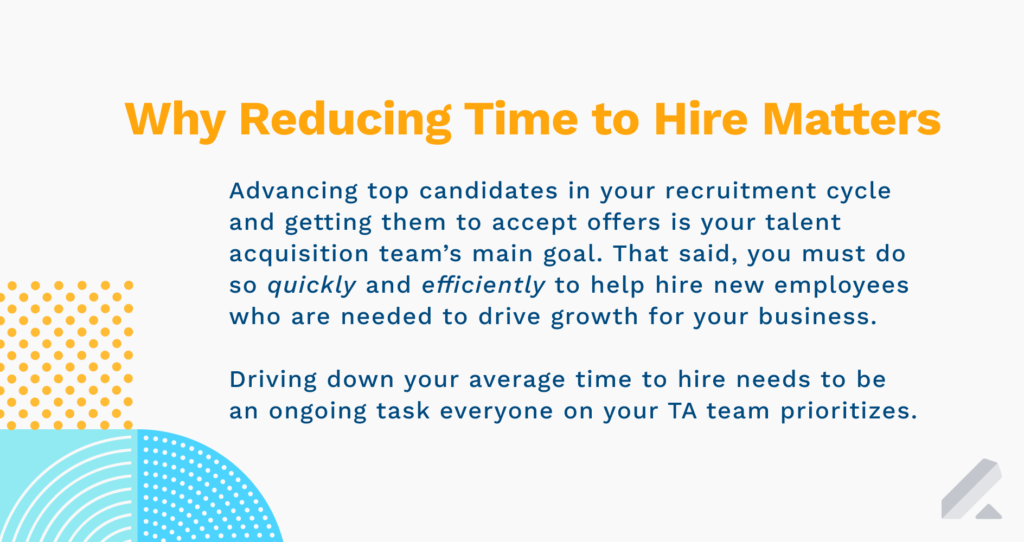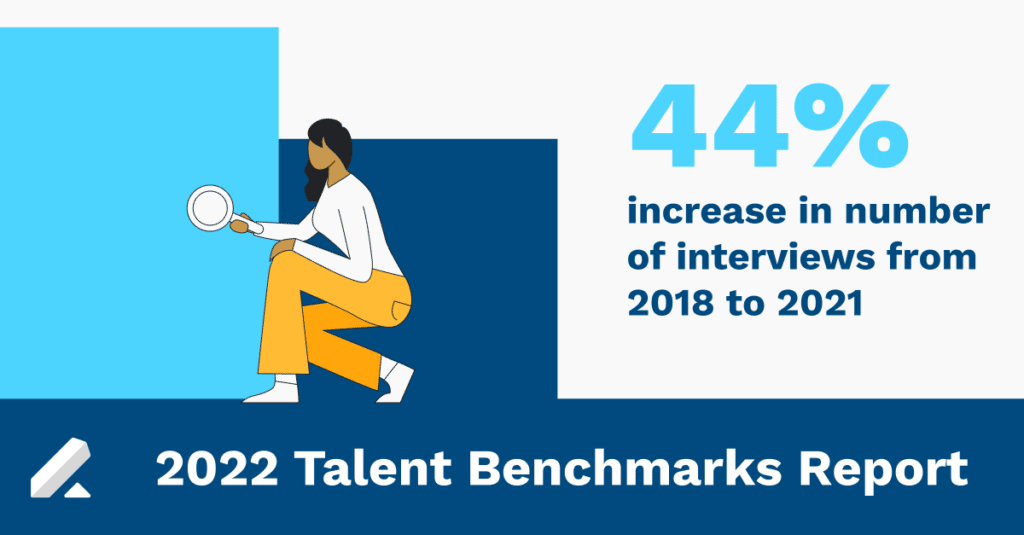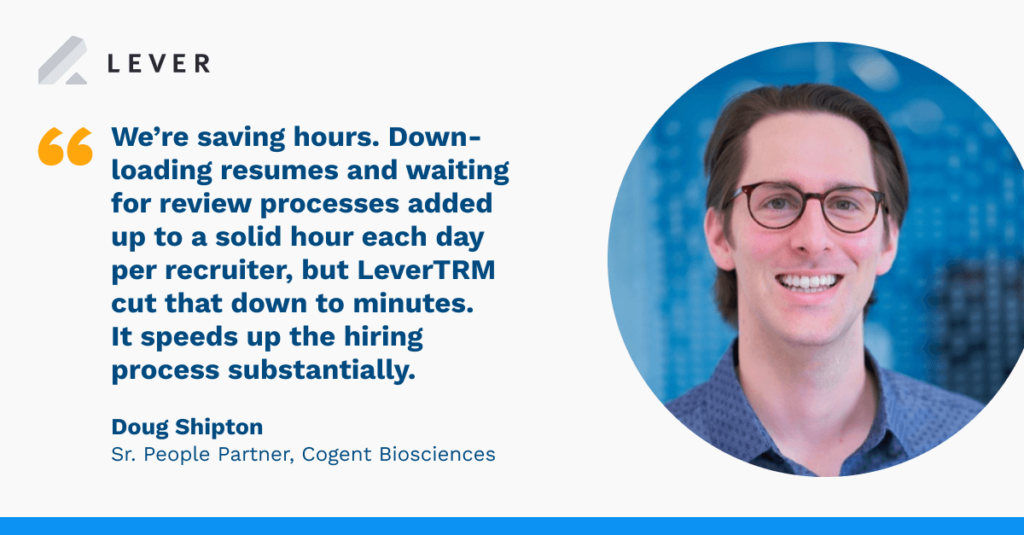Talent sourcing and hiring the right candidates is hard enough. Doing so speedily — and, thereby, realizing a quick time to fill — simply adds yet another layer of complexity to talent acquisition specialists’ work.
Time to fill refers to the total number of calendar days to fill a position (i.e., from when a requisition gets approved by leadership to when a new hire accepts a job offer).
It’s a key data point practically every talent team (likely yours) tracks.
However, too few of these teams make a concerted, coordinated effort to continually drive down their average time to fill and, in turn, streamline their recruitment process.
The good news? This recruiting metric (and others) can be improved with robust TA software.

Measuring and improving time to fill: Essential to your talent team’s long-term hiring success
How you calculate time to fill (and time to hire) may differ slightly from other orgs.
Some may factor in the completion of employee onboarding into the metric and/or start the time-to-fill ‘clock’ when a requisition is submitted versus when it’s approved.
Regardless of the exact formula, the metric denotes just how efficient (or inefficient) each member of your talent team (and your team at large) is with filling roles.
Consider Lever customers. Many use our Talent Acquisition Benchmarks dashboard to see how their teams perform compared to others in terms of hiring speed and efficiency.
Tracking the time-to-fill benchmark data of Lever customers and comparing it with their own enables TA leaders and operations managers to discern which recruiters help convert the most candidates quickly — and which don’t.

Consider this:
- If one recruiter takes 40 days on average to convert a candidate, that’s a clear indication there’s an issue with their sourcing, nurturing, and/or interviewing approaches.
- Conversely, if another recruiter takes 20 days on average to fill active roles, they clearly have a better handle on their pipeline management and recruiting process.
Of course, context matters when measuring time to fill and recruiting performance:
- For instance, the recruiter who takes roughly 40 days to make a hire may have driven down their average from 60 days just a few months prior, thus showing progress.
- Similarly, their colleague who fills roles in 20 days on average may have seen that number slip from, say, 30 days in the previous quarter, indicating a minor regression.
Lever customers keep this context top of mind — and account for other factors, like the software they use to guide and track their recruiting activities — so they can improve.
One such customer, Cogent Biosciences, is a prime example of how the right recruiting platform can lead to speedier (and smarter) hiring and help them scale as desired.

Using the right recruitment software to reduce time to fill (and improve other key hiring metrics)
A traditional, standalone ATS was once useful for talent orgs. (Emphasis on “was.”)
Today, though, old-school, limited ATS solutions (i.e., ones that essentially acted as storage for resumes and other candidate info) just don’t cut it for recruiting teams with increasingly complex hiring needs and goals.
Cogent Biosciences recognized its legacy ATS wasn’t helping its TA team achieve its hiring quotas — and in swift fashion. So, it invested in LeverTRM.
“The biggest pitfall of was the amount of time required to review applicants,” said Cogent Biosciences Senior People Partner Doug Shipton. “Hiring managers spent more time waiting for documents to load than they spent on reading resumes.”
Time is a valuable commodity for talent specialists and hiring managers.
Force them to wait on ops to sync candidate data and info from disparate solutions into their centralized recruiting software and then sort through each manually, though, and you end up with lots of wasted work hours.
Thankfully, this is no longer an issue for Cogent, which now uses LeverTRM to make its recruiting process more efficient.
Its TA team uses our native CRM capabilities, including:
- Fast Resume Review: Qualified candidates’ resumes populate to the relevant Cogent recruiter, who can then easily advance or archive the prospects in question quickly and efficiently.
- Easy Book: Connecting hiring team members’ calendars with LeverTRM enables Cogent’s candidates to schedule interviews at times that work for each interview panelist.
- Visual Insights: “The reporting function in Lever is excellent,” Doug noted. “You can break it out into a variety of details, whether it’s tracking referrals or candidate pipeline stages. All those metrics are very helpful, when you’re kind of considering your processes and fine-tuning things.”
Using our advanced ATS + CRM, Cogent has:
- Reduced its average time to fill to 33 days
- Accelerated resume review process by 92%
- Achieved headcount growth of almost 500%
“We’re saving hours,” Doug explained. “Downloading resumes and waiting for review processes added up to a solid hour each day per recruiter, but LeverTRM cut that down to minutes.
“It speeds up the hiring process substantially.”
Learn how you can drive down time to fill with LeverTRM too. Schedule your demo today.



